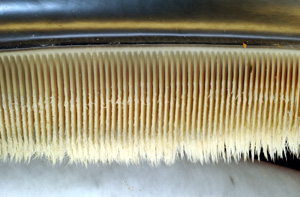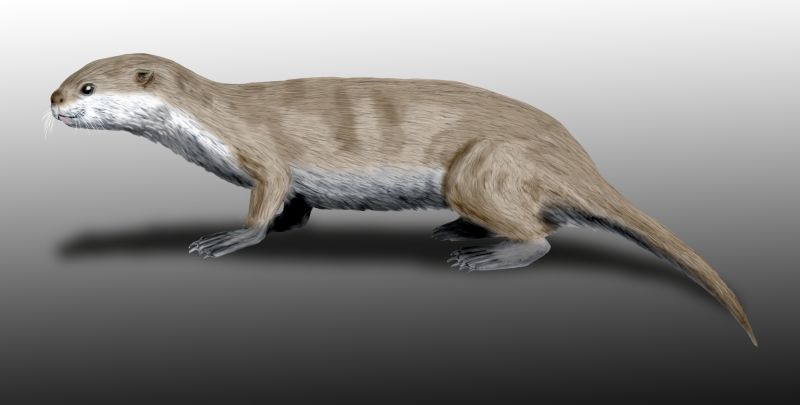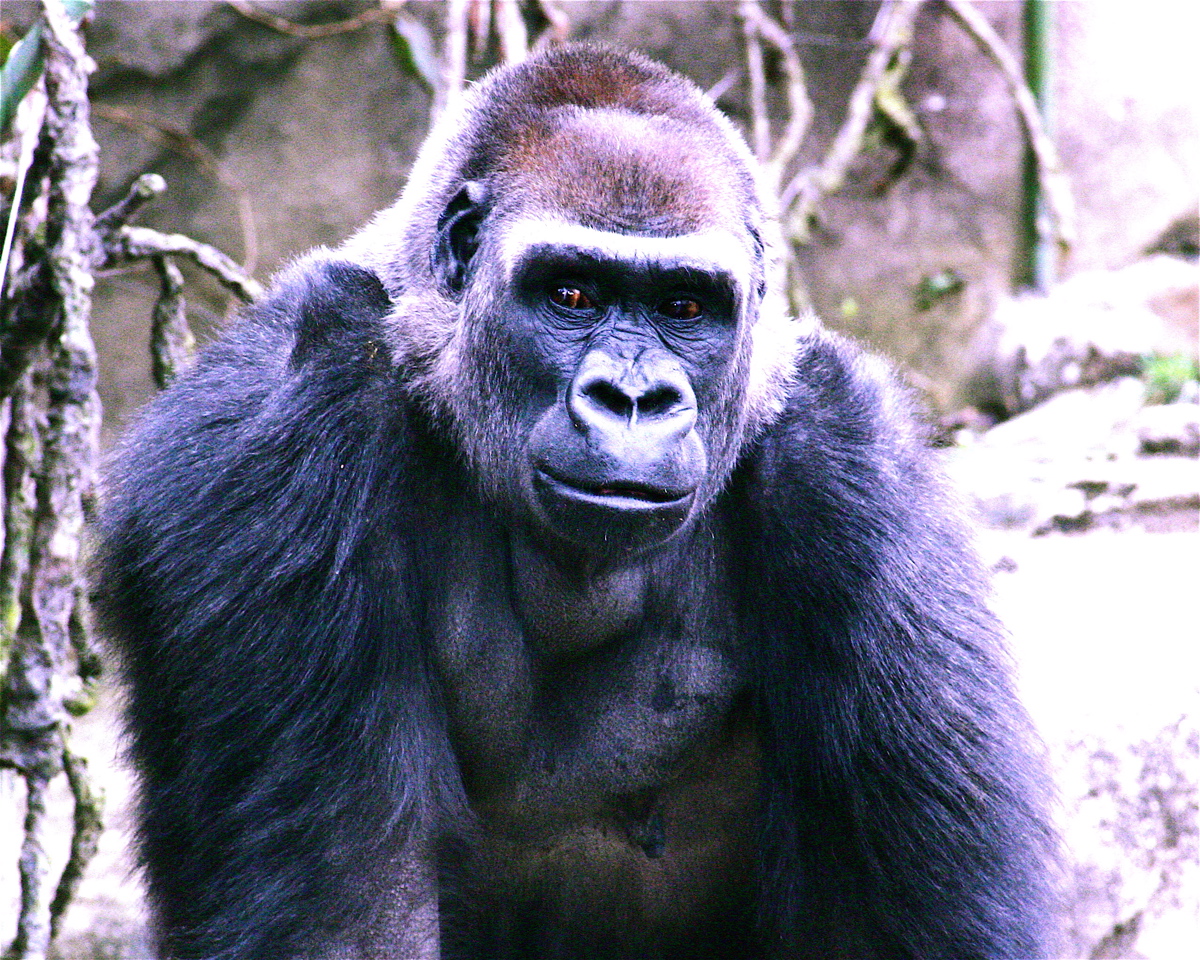|
Odontocete
The toothed whales (also called odontocetes, systematic name Odontoceti) are a parvorder of cetaceans that includes dolphins, porpoises, and all other whales possessing teeth, such as the beaked whales and sperm whales. Seventy-three species of toothed whales are described. They are one of two living groups of cetaceans, the other being the baleen whales (Mysticeti), which have baleen instead of teeth. The two groups are thought to have diverged around 34 million years ago (mya). Toothed whales range in size from the and vaquita to the and sperm whale. Several species of odontocetes exhibit sexual dimorphism, in that there are size or other morphological differences between females and males. They have streamlined bodies and two limbs that are modified into flippers. Some can travel at up to 20 knots. Odontocetes have conical teeth designed for catching fish or squid. They have well-developed hearing, that is well adapted for both air and water, so much so that some can sur ... [...More Info...] [...Related Items...] OR: [Wikipedia] [Google] [Baidu] |
Whale
Whales are a widely distributed and diverse group of fully aquatic placental marine mammals. As an informal and colloquial grouping, they correspond to large members of the infraorder Cetacea, i.e. all cetaceans apart from dolphins and porpoises. Dolphins and porpoises may be considered whales from a formal, cladistic perspective. Whales, dolphins and porpoises belong to the order Cetartiodactyla, which consists of even-toed ungulates. Their closest non-cetacean living relatives are the hippopotamuses, from which they and other cetaceans diverged about 54 million years ago. The two parvorders of whales, baleen whales (Mysticeti) and toothed whales (Odontoceti), are thought to have had their last common ancestor around 34 million years ago. Mysticetes include four extant (living) families: Balaenopteridae (the rorquals), Balaenidae (right whales), Cetotheriidae (the pygmy right whale), and Eschrichtiidae (the grey whale). Odontocetes include the Monodontidae (be ... [...More Info...] [...Related Items...] OR: [Wikipedia] [Google] [Baidu] |
Cetacea
Cetacea (; , ) is an infraorder of aquatic mammals that includes whales, dolphins, and porpoises. Key characteristics are their fully aquatic lifestyle, streamlined body shape, often large size and exclusively carnivorous diet. They propel themselves through the water with powerful up-and-down movement of their tail which ends in a paddle-like fluke, using their flipper-shaped forelimbs to maneuver. While the majority of cetaceans live in marine environments, a small number exclusively reside in brackish water or fresh water. Having a cosmopolitan distribution, they can be found in some rivers and all of Earth's oceans, and many species inhabit vast ranges where they migrate with the changing of the seasons. Cetaceans are famous for their high intelligence and complex social behaviour as well as for the enormous size of some of the group's members, such as the blue whale which reaches a maximum confirmed length of 29.9 meters (98 feet) and a weight of 173 tonnes (190 short ... [...More Info...] [...Related Items...] OR: [Wikipedia] [Google] [Baidu] |
Sperm Whale
The sperm whale or cachalot (''Physeter macrocephalus'') is the largest of the toothed whales and the largest toothed predator. It is the only living member of the genus '' Physeter'' and one of three extant species in the sperm whale family, along with the pygmy sperm whale and dwarf sperm whale of the genus ''Kogia''. The sperm whale is a pelagic mammal with a worldwide range, and will migrate seasonally for feeding and breeding. Females and young males live together in groups, while mature males (bulls) live solitary lives outside of the mating season. The females cooperate to protect and nurse their young. Females give birth every four to twenty years, and care for the calves for more than a decade. A mature sperm whale has few natural predators, although calves and weakened adults are sometimes killed by pods of killer whales (orcas). Mature males average in length, with the head representing up to one-third of the animal's length. Plunging to , it is the third d ... [...More Info...] [...Related Items...] OR: [Wikipedia] [Google] [Baidu] |
Porpoise
Porpoises are a group of fully aquatic marine mammals, all of which are classified under the family Phocoenidae, parvorder Odontoceti (toothed whales). Although similar in appearance to dolphins, they are more closely related to narwhals and belugas than to the true dolphins. There are eight extant species of porpoise, all among the smallest of the toothed whales. Porpoises are distinguished from dolphins by their flattened, spade-shaped teeth distinct from the conical teeth of dolphins, and lack of a pronounced beak, although some dolphins (e.g. Hector's dolphin) also lack a pronounced beak. Porpoises, and other cetaceans, belong to the clade Cetartiodactyla with even-toed ungulates. Porpoises range in size from the vaquita, at in length and in weight, to the Dall's porpoise, at and . Several species exhibit sexual dimorphism in that the females are larger than males. They have streamlined bodies and two limbs that are modified into flippers. Porpoises use e ... [...More Info...] [...Related Items...] OR: [Wikipedia] [Google] [Baidu] |
Cetacean Intelligence
Cetacean intelligence is the cognitive ability of the infraorder Cetacea of mammals. This order includes whales, porpoises, and dolphins. Brain size Brain size was previously considered a major indicator of the intelligence of an animal. However, many other factors also affect intelligence, and recent discoveries concerning bird intelligence have called into question the influence of brain size. Since most of the brain is used for maintaining bodily functions, greater ratios of brain to body mass may increase the amount of brain mass available for more complex cognitive tasks. Allometric analysis indicates that in general, mammalian brain size scales at approximately the or exponent of body mass. Comparison of actual brain size with the size expected from allometry provides an encephalization quotient (EQ) that can be used as a more accurate indicator of an animal's intelligence. * Sperm whales (''Physeter macrocephalus'') have the largest known brain mass of any extant animal, ... [...More Info...] [...Related Items...] OR: [Wikipedia] [Google] [Baidu] |
Baiji
The baiji (; IPA: ; ''Lipotes vexillifer'', ''Lipotes'' meaning "left behind" and ''vexillifer'' "flag bearer") is a possibly extinct species of freshwater dolphin native to the Yangtze river system in China. It is thought to be the first dolphin species driven to extinction due to the impact of humans. This dolphin is listed as “critically endangered: possibly extinct” by the IUCN, has not been seen in 20 years, and several surveys of the Yangtze have failed to find it. In China, the species is also called the Chinese river dolphin, Yangtze river dolphin, Yangtze dolphin and whitefin dolphin. Nicknamed the "Goddess of the Yangtze" (), it was regarded as the goddess of protection by local fishermen and boatmen. It is not to be confused with the Chinese white dolphin (''Sousa chinensis'') or the finless porpoise (''Neophocaena phocaenoides''). The baiji population declined drastically in decades as China industrialized and made heavy use of the river for fishing, transportati ... [...More Info...] [...Related Items...] OR: [Wikipedia] [Google] [Baidu] |
Baleen
Baleen is a filter-feeding system inside the mouths of baleen whales. To use baleen, the whale first opens its mouth underwater to take in water. The whale then pushes the water out, and animals such as krill are filtered by the baleen and remain as a food source for the whale. Baleen is similar to bristles and consists of keratin, the same substance found in human fingernails, skin and hair. Baleen is a skin derivative. Some whales, such as the bowhead whale, have longer baleen than others. Other whales, such as the gray whale, only use one side of their baleen. These baleen bristles are arranged in plates across the upper jaw of whales. Depending on the species, a baleen plate can be long, and weigh up to . Its hairy fringes are called baleen hair or whalebone hair. They are also called baleen bristles, which in sei whales are highly calcified, with calcification functioning to increase their stiffness. Baleen plates are broader at the gumline (base). The plates have b ... [...More Info...] [...Related Items...] OR: [Wikipedia] [Google] [Baidu] |
Baleen Whale
Baleen whales ( systematic name Mysticeti), also known as whalebone whales, are a parvorder of carnivorous marine mammals of the infraorder Cetacea ( whales, dolphins and porpoises) which use keratinaceous baleen plates (or "whalebone") in their mouths to sieve planktonic creatures from the water. Mysticeti comprises the families Balaenidae (right and bowhead whales), Balaenopteridae ( rorquals and the gray whale), and Cetotheriidae (the pygmy right whale). There are currently 16 species of baleen whales. While cetaceans were historically thought to have descended from mesonychids, molecular evidence instead supports them as a clade of even-toed ungulates (Artiodactyla). Baleen whales split from toothed whales (Odontoceti) around 34 million years ago. Baleen whales range in size from the and pygmy right whale to the and blue whale, the largest known animal to have ever existed. They are sexually dimorphic. Baleen whales can have streamlined or large bodies, de ... [...More Info...] [...Related Items...] OR: [Wikipedia] [Google] [Baidu] |
Dolphin
A dolphin is an aquatic mammal within the infraorder Cetacea. Dolphin species belong to the families Delphinidae (the oceanic dolphins), Platanistidae (the Indian river dolphins), Iniidae (the New World river dolphins), Pontoporiidae (the brackish dolphins), and the extinct Lipotidae (baiji or Chinese river dolphin). There are 40 extant species named as dolphins. Dolphins range in size from the and Maui's dolphin to the and orca. Various species of dolphins exhibit sexual dimorphism where the males are larger than females. They have streamlined bodies and two limbs that are modified into flippers. Though not quite as flexible as seals, some dolphins can briefly travel at speeds of per hour or leap about . Dolphins use their conical teeth to capture fast-moving prey. They have well-developed hearing which is adapted for both air and water. It is so well developed that some can survive even if they are blind. Some species are well adapted for diving to great de ... [...More Info...] [...Related Items...] OR: [Wikipedia] [Google] [Baidu] |
Pinnipeds
Pinnipeds (pronounced ), commonly known as seals, are a widely distributed and diverse clade of carnivorous, fin-footed, semiaquatic, mostly marine mammals. They comprise the extant families Odobenidae (whose only living member is the walrus), Otariidae (the eared seals: sea lions and fur seals), and Phocidae (the earless seals, or true seals). There are 34 extant species of pinnipeds, and more than 50 extinct species have been described from fossils. While seals were historically thought to have descended from two ancestral lines, molecular evidence supports them as a monophyletic lineage (descended from one ancestral line). Pinnipeds belong to the order Carnivora; their closest living relatives are musteloids (weasels, raccoons, skunks, and red pandas), having diverged about 50 million years ago. Seals range in size from the and Baikal seal to the and southern elephant seal male, which is also the largest member of the order Carnivora. Several species exhibi ... [...More Info...] [...Related Items...] OR: [Wikipedia] [Google] [Baidu] |
Polygyny In Animals
Polygyny (; from Neo-Greek πολυγυνία, from πολύ- ''poly-'', "many", and γυνή ''gyne'', "woman" or "wife") is a mating system in which one male lives and mates with multiple females but each female only mates with a single male. Systems where several females mate with several males are defined either as promiscuity or polygynandry. Lek mating is frequently regarded as a form of polygyny, because one male mates with many females, but lek-based mating systems differ in that the male has no attachment to the females with whom he mates, and that mating females lack attachment to one another.Clutton-Brock T.H. (1989). ‘Review lecture: mammalian mating systems.' ''Proceedings of the Royal Society of London''. Series B, Biological Sciences 236: 339–372. Polygyny is typical of one-male, multi-female groupsBoyd, R., & Silk, J. B. (2009). How Humans Evolved (preferably the downloadable pdf version): WW Norton & Company, New York. and can be found in many species inclu ... [...More Info...] [...Related Items...] OR: [Wikipedia] [Google] [Baidu] |
Early Oligocene
The Rupelian is, in the geologic timescale, the older of two ages or the lower of two stages of the Oligocene Epoch/ Series. It spans the time between . It is preceded by the Priabonian Stage (part of the Eocene) and is followed by the Chattian Stage. Name The stage is named after the small river Rupel in Belgium, a tributary to the Scheldt. The Belgian Rupel Group derives its name from the same source. The name Rupelian was introduced in scientific literature by Belgian geologist André Hubert Dumont in 1850. The separation between the group and the stage was made in the second half of the 20th century, when stratigraphers saw the need to distinguish between lithostratigraphic and chronostratigraphic names. Stratigraphic definition The base of the Rupelian Stage (which is also the base of the Oligocene Series) is at the extinction of the foraminiferan genus '' Hantkenina''. An official GSSP for the base of the Rupelian has been assigned in 1992 ( Massignano, Italy) ... [...More Info...] [...Related Items...] OR: [Wikipedia] [Google] [Baidu] |
.jpg)








